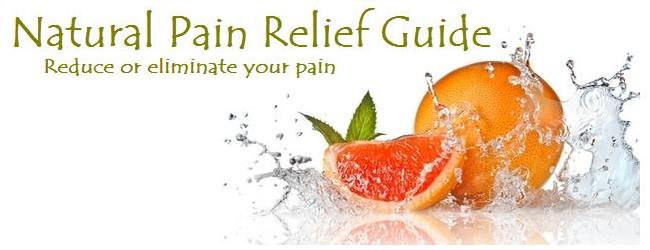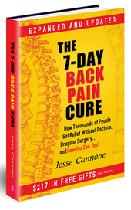 |
||||||||||||||||||||||||
Learn how to make sauerkraut so that you can enjoy the results of the
lactic acid fermentation process.
Lactic acid bacteria produce many benefits
to the human digestive system. Here is a detailed description of how to make this tasty and healthful food.
Using Lactic Acid Fermentation |
||||||||||||||||||||||||
| beans, snap | beets | broccoli|
| cabbage | carrots | cauliflower |
| celery | cucumbers | daikon radish |
| eggplant, small | garlic | kohlrabi |
| leeks | onions | peppers |
| squash, summer | Swiss chard stems | tomatoes |
| turnips |
Here are directions for a few of the above. The same basic procedure is used in most cases.
Green Beans
3 ½ cups fresh green beans ½ small onion, sliced
Dill, savoury, garlic
5.4% brine
Green beans are the only vegetable which must be cooked 5 minutes prior to
fermenting to destroy the protein phasing, which interferes with digestion. Fill the jar to 80%, add raspberry, currant or grape leaves, screw lid on tightly and store in the dark.
Beets
3 1/2 cups beets, sliced or ½ inch cubes
Seasonings - try mustard seeds, caraway, dill.
1 Tbsp fresh grated horseradish, garlic, onions
5.4% brine, raspberry, currant or grape leaves
Wash and peel beets before using.
Cucumbers
3 cups fresh, washed cucumbers
Seasonings: try onion, garlic, dill, fresh horseradish root
5.4% brine
Remove blossom end to ensure cucumbers do not go soft in the fermentation
process. Fill the jar and cover the top with grape, raspberry or currant leaves. Top up with brine and seal tightly.
Carrots cauliflower etc (try mixing veggies)
3+ cups vegetables, cleaned and chopped, made into sticks etc.
Onions, garlic, bay leaf, horseradish root, mustard seeds, dill
5.4% brine. Carrots do not need to be peeled.
Other Notes About How to Make Sauerkraut and Other Ferments:
1. Containers: Never use metal! Use glass jars, glass lids, rubber rings and a metal screw lid or a proper crock for fermenting. Wash and sterilize jars (or at least clean them very thoroughly), glass lids and rubber rings with boiling water. Let jars cool before using. Keep lids with rings hot to help ensure a tight fit when sealed. Some people recommend against using any plastic but it seems to be okay to use a plastic spoon to serve your ferments when done.
2. Brine: 3 Tbsp. Celtic sea salt to 1 quart of water makes a 5.4% brine. Never use chlorinated water as chlorine kills microorganisms. Boil the water to remove the chlorine, then cool before using. Do not use iodized salt as iodine is anti-microbial. Do not cut back on the salt as salt act as a preservative until the lactic acid forms.
3. Vegetables: Use only fresh, organic. The best are those grown in your garden, picked, washed and used immediately. Chemicals do not aid the process of fermentation.
4. Seasonings: Experiment with amounts and combinations.
- Bay leaves
- Caraway seeds
- Cloves
- Coriander
- Dill
- Garlic
- Horseradish
- Juniper berries
- Onions
- Pimentos
- Summer Savory
- Red Pepper
- Rosemary
5. Filling the jars: Add vegetables and seasonings to 80% capacity in order to allow about 1/2 inch of brine over the vegetables. Pack vegetables in tightly to avoid air pockets. Cover the top of the vegetables with fresh raspberry leaves or black current leaves which are rich in lactic acid bacteria. Grape leaves may also be used to cover. This aids in keeping the vegetables under the brine. Pour brine over and screw metal lid on tightly.
You may also take an outer leaf of cabbage and cut it using a jar lid to the right size to put on top of the veggies and help hold them under the brine.
6. Storage: Ferments must be kept in the dark! To begin the fermentation process place in a temperature range of 15 - 18 degrees for three weeks before using. Then store at 0 to 10 degrees. The cooler the temperature the slower the ferment and the longer it will keep. (I place mine, immediately after making (except for cabbage) in the cold room in August at about 13 - 15 degrees and by the end of October the temperature has drop to about 7 degrees).
Miscellaneous Notes About How to Make Sauerkraut:Bad Ferments:
The acidic environment created in the fermentation process is inhospitable to the bacteria which cause food poisoning. Only the top layer of the veggies has had contact with the microbial-rich air. When this layer is removed the ferment is fine. If the ferment looks or smells disgusting, or is soft and mushy, don't use it.
Concerns Over the Use of Salt:
Many people are watching their salt intake and might not even want to learn how to make sauerkraut because they question the use of salt in making ferments. Vegetables contain proteins which tend to spoil when they begin to break down. Salt is used to preserve the vegetables until sufficient lactic acid is produced in quantities large enough to have a preservative effect
The salt solution is only 5.4%. The amount of salt used in relation to the vegetables is 0.8 to 1.5% by weight. Most of the salt stays in the brine solution. You only eat a few ounces at most of the ferments per day. You do need some salt in your diet. Reduce it in other areas by cutting out processed foods which tend to be very high in salt. You're very unlikely to get an excessive amount of salt by eating ferments. When you understand the many benefits from lactic acid bacteria you may decide it is worth adjusting your salt intake elsewhere and learning how to make sauerkraut for yourself.
Increasing the salt gives a slower ferment and a more acid result.
Brine from fermentation:
As the vegetables ferment, the brine becomes full of complex flavour and loaded with Lactobacilli. As the ferments are eaten, the leftover brine can be used as:
- a soup stock.
- a digestive tonic, dilute with water to degree of saltiness desired.
- the liquid for salad dressing.
- a starter for the next batch
Garlic slows the fermentation process - do not use too much.
Horseradish helps to keep ferments crisp.
Inulin from chicory root or Jerusalem artichoke is not digested in the upper intestinal tract and so reaches the large intestine intact where it feeds the friendly bacteria (this is classed as a prebiotic). You can add some to your ferments.
Captain Cook and other seafarers carried barrels of sauerkraut for long voyages. It helped to keep the crews free of scurvy. The vitamin C preserved in lactic acid fermentation and the resulting healthy intestinal flora helps combat disease.
Hundreds of years ago, the procedure of how to make sauerkraut was much more widely known. Without refrigerators, they had to use other ways to preserve their food. It turns out that sometimes the old ways are better, certainly healthier. Learn how to make sauerkraut and other ferments yourself and enjoy the taste and the health benefits.
Return from How to Make Sauerkraut to Nutrition information
|
Keep up to date with valuable insights into pain management via a healthy lifestyle. Receive the monthly Natural Pain Relief Guide Newsletter. News articles, health tips, specials, freebies. Enter your email and name in the form to the right. |
Relieve your pain - approved medical device increases circulation and healing.
The contents of this site are intended for educational and information purposes only.
You have a right (and a responsibility) to educate yourself regarding health matters.
The information presented here is not meant to diagnose, prevent, mitigate, treat, or
cure any disease. If you have health concerns, consult a nutritionally-oriented health
professional and take responsibility to become educated in caring for your own health.







New! Comments
Have your say about what you just read! Leave me a comment in the box below.